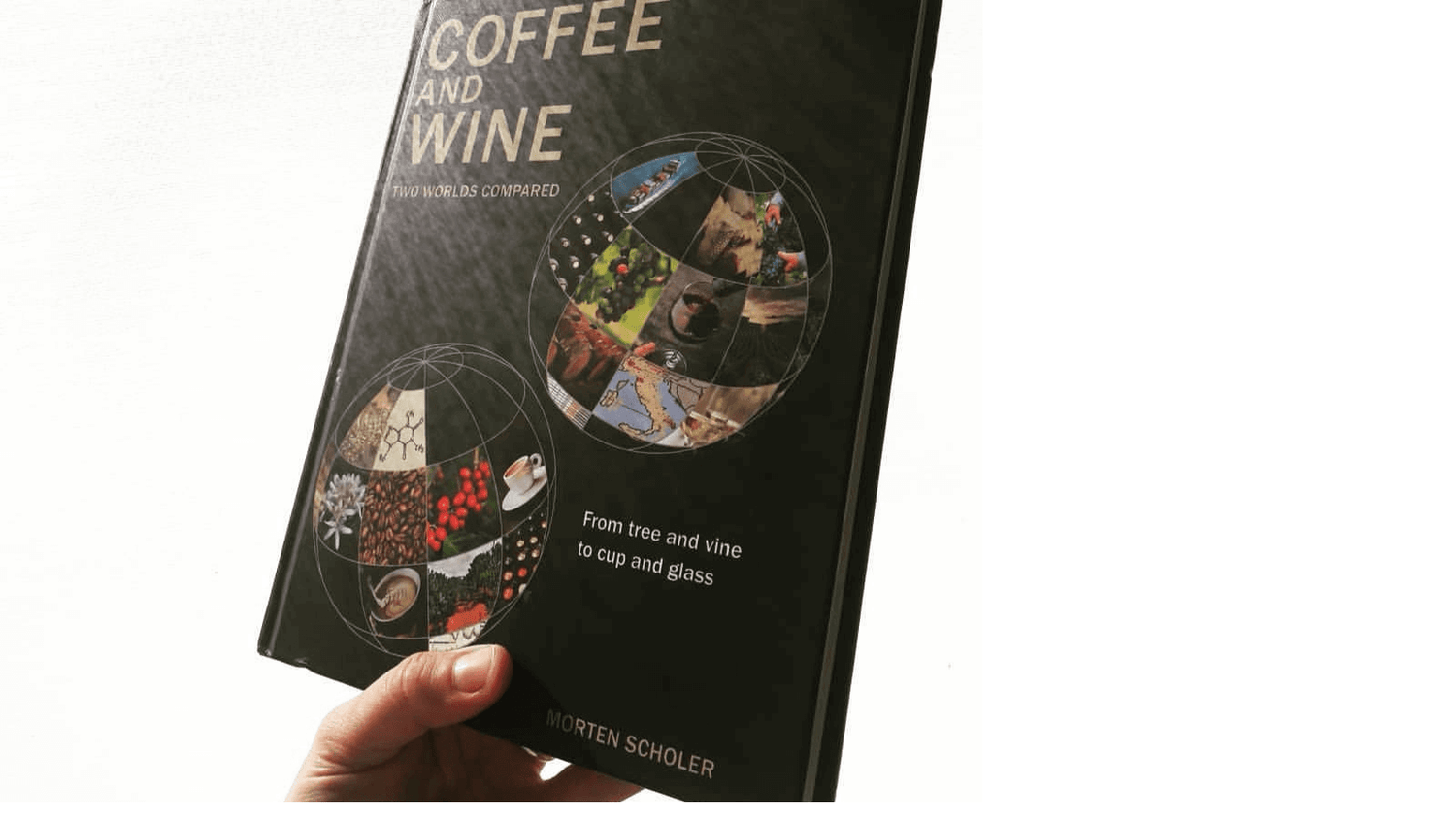We coffee people often use the phrase "It's like wine!" when we want to explain something about coffee. But does the comparison between the two beverages hold up? Are there really so many similarities?
In September 2018, I bought the book by Morten Scholer , "Coffee and Wine," pictured above. The author compares the two beverages with a precision that no one has ever done before. Using hundreds of examples, he demonstrates that the two products are only superficially similar, but when we delve deeper, we find far more differences than similarities.
This might hurt the coffee lovers among us a bit. But does it hurt the wine lovers too? I don't think so (yet). The urge to often compare coffee with wine probably comes largely from the coffee community.
I recently conducted a coffee tasting for amateurs, which is always extremely exciting. I tried to mix as many extreme coffees as possible with the usual ones. We had coffees from Brazil, Kenya, Ethiopia , and Central America, with different processing methods, ages, and roast levels. To demonstrate how diverse the coffees were, I said: "If we were drinking wine here, it would probably be a Riesling, a grape juice, an Amarone, a Chardonnay, and a Pinot Noir." There were chuckles—the reference to wine jargon was understood.
Would wine people now say: "This wine tasting is like coffee? We're comparing..." – hardly.
There are simple reasons: the majority of connoisseurs have probably already experienced a wine tasting, but never a coffee tasting. Many feel more at home with wine than with coffee . And if a coffee tasting has been conducted, it's very rarely in a format that even rivals a wine tasting: as a cupping (because it's the most honest way to analyze coffee), structured, and objective.
When I see espresso tastings being used as a comparison, I see some insurmountable challenges here: Espresso must first be extracted well. And then you have to be willing and able to sip several espressos in a row and analyze them – and who does that with any enjoyment? Before that, it leaves a furry coating on your tongue like a young Barolo, and every subsequent drink tastes only half as good.
Adventurous with wine, conservative with coffee
At the same time, and this is my personal feeling, you're a bit more adventurous with wine than with coffee. Coffee is an intimate ritual, those personal five minutes in the morning that you can't take away from anyone, let alone dispute. Every coffee drinker knows exactly what they want and need. No discussion.
The situation is quite different in the evening, in a restaurant, as a reward for the day's work. You're happy to rely on the sommelier's expertise or enjoy studying the wine list. I often find myself choosing from a menu quite quickly, then drowning myself in the wine list for the last two-thirds of the time until I order. Because it's simply fun and educational.
Coffee and wine lists
And the coffee menu? It might say something like "our coffee specialties," which should never be confused with "our specialty coffee ." Those are two different things, but both sound good. Unfortunately, there are still far too few extensive coffee menus. It's also technically difficult to implement if you're committed to freshness – to keep 20 wines fresh, I simply don't open them yet. Aging them for a few days longer won't do them any harm. But aging the coffee for a few days longer can affect it.
Coffee and wine are different. As coffee lovers, we can use wine to compare sensations, sensory impressions, and interpretations. Likewise, wine vocabulary also serves us in coffee; we can easily integrate it into coffee language.
But when it comes to cultivation, the similarities end. For example, vines growing on dry, barren, and steep soils have the potential to produce excellent crops. Coffee trees growing on dry, barren, and steep soils will die.
Where is the journey going?
The more cafés opt for a bolder coffee menu in the future, focusing more on specialty coffee and fewer coffee specialties, the greater the potential will be.
The potential for exchange between two products that, at first glance, are so similar, yet so different. Sensory perception is the first point of contact; everything after that requires deeper explanation. And now we're in a discussion. So – share knowledge, create bold drink menus, and get started.
A great podcast on this topic comes from Lucia Solis—a former winemaker turned coffee specialist. Highly recommended!

























